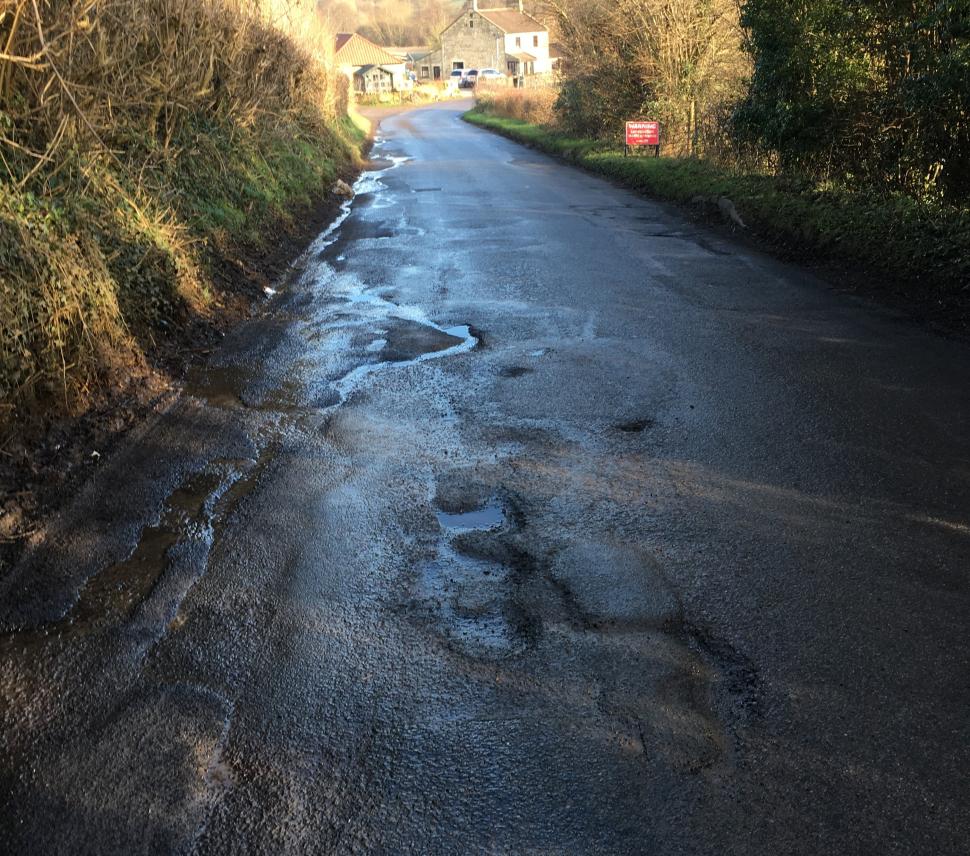A new report has raised the alarm about the UK’s “pothole crisis” with lawyers from Cycle SOS suggesting the “stark postcode lottery” for reporting and repairs is putting cyclists at risk.
Cycling injury legal specialists Cycle SOS have put together an extensive report to get to grips with the scale of the problem nationwide, submitting Freedom of Information (FOI) requests to every local authority in the country to map the situation.
“The findings paint a worrying picture: huge disparities in how potholes are reported, responded to, and repaired,” Cycle SOS has warned.
“As legal specialists dedicated to representing injured cyclists, we understand just how dangerous potholes can be. These hidden hazards aren’t just an annoyance – they can result in serious injury, costly bike damage, and traumatic crashes.”
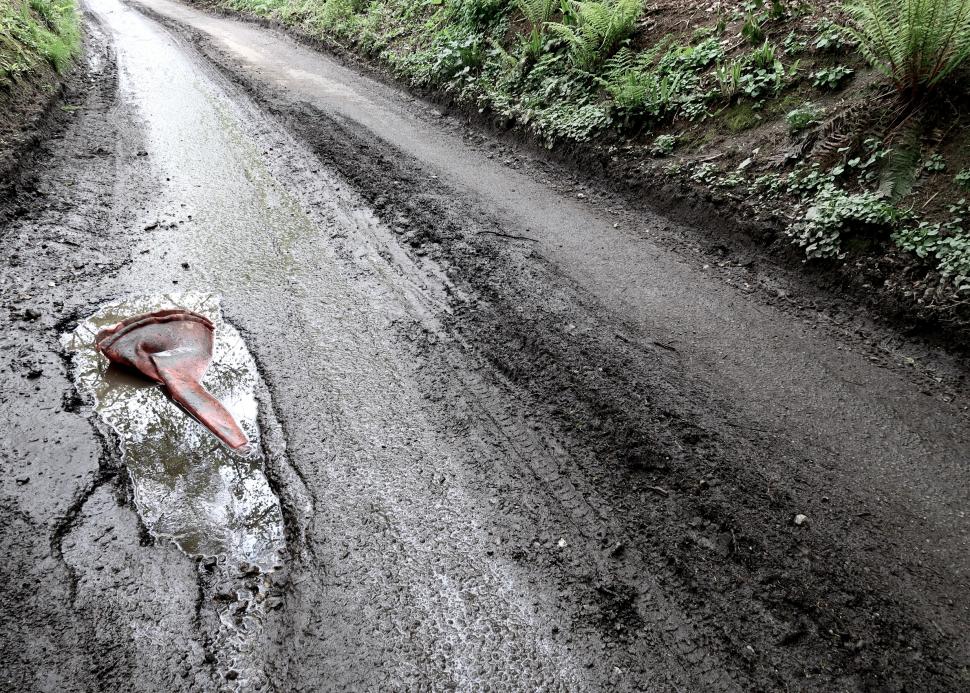 pothole 1 – VecchioJo (credit: road.cc)
pothole 1 – VecchioJo (credit: road.cc)
In terms of the council which received the most pothole reports in 2024, Durham County Council is well clear of the rest of the UK, with 66,721 reported potholes last year. That was more than 30,000 more reports than the local authority with the second most reports (Cambridgeshire County Council with 36,409).
Norfolk CC (35,442), Leeds CC (35,410), Hertfordshire (26,027), Leicestershire CC (21,810), Essex CC (19,275), West Northamptonshire Council (17,036), Central Bedfordshire Council (12,593), and Northumberland CC (11,529) completed the top ten.
One issue is what Cycle SOS called a “postcode lottery” in reporting and repairs, meaning that some areas have better reporting systems so have received more reports, while other local authorities deal with reports and repairs better than others.
For example, the report also noted the percentage increase of reports between 2022 and 2024, Northumberland CC’s pothole reports rising 6,642 per cent over the two-year period. Why? Well, the council introduced a new online reporting system. “A step in the right direction,” Cycle SOS said, but pointed out the rise also raises concerns about other areas where a reporting system might not be in place.
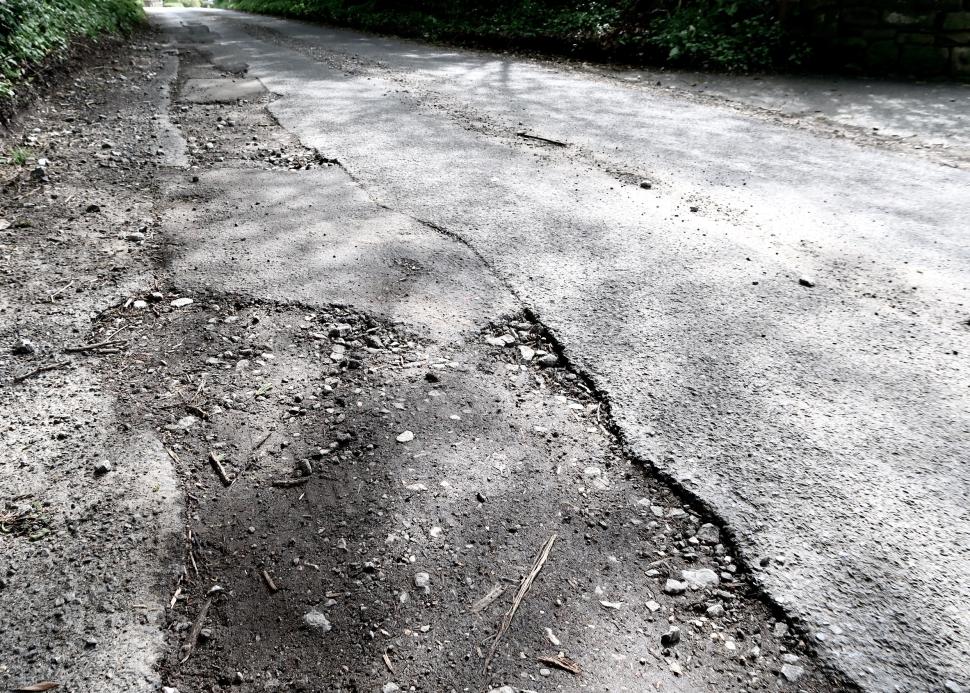 pothole 2 – VecchioJo (credit: road.cc)
pothole 2 – VecchioJo (credit: road.cc)
“The increased visibility also shines a light on how underreported issues may have been previously,” the report’s authors said. The rise could of course also be linked to increasing concerns about declining road quality, although in the case of such a stark rise as Northumberland’s, the coinciding with the introduction of a new reporting system appears most likely to be the predominant cause for the spike.
Other councils in the top-20 local authorities with the biggest increase in pothole reports saw rises in excess of 80 per cent. In Northumberland’s case that was a rise from 171 reported defects in 2022 to 11,529 in 2024, while most other local authorities in the top-10 for biggest increase in that time period saw their reported defects rise from the hundreds to 1,000+ in 2024.
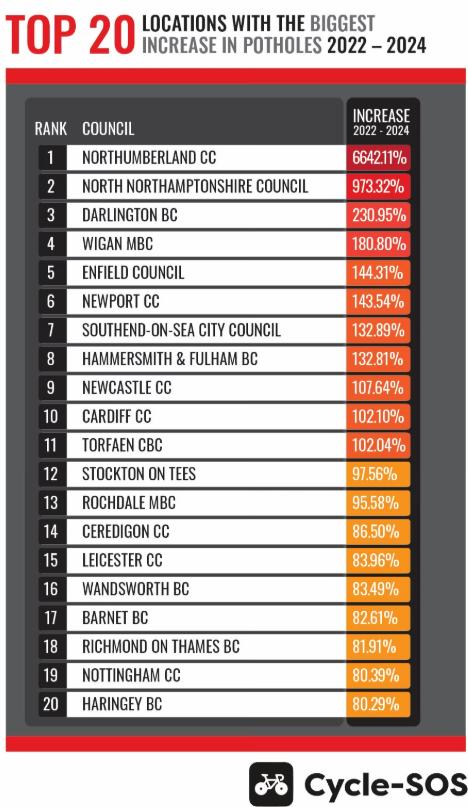 Cycle SOS pothole report (credit: Cycle SOS)
Cycle SOS pothole report (credit: Cycle SOS)
“These figures raise serious concerns about declining road quality, with implications for injuries, bike damage, and legal claims. When road defects go unrepaired, it’s not just frustrating – it’s dangerous. Cyclists are at risk of being hospitalised because councils aren’t acting fast enough,” Cycle SOS commented.
While Cycle SOS also highlighted some councils which had reduced the number of reports, it’s not clear whether this was due to positive repair work or other factors, such as changes to pothole reporting.
 Pothole (credit: Malachy Quinn/Twitter)
Pothole (credit: Malachy Quinn/Twitter)
One thing which was clear was what the cycling injury lawyers termed “patchy” response times and “poor transparency”. Having asked councils for repair times and compliance rates, the report’s authors concluded: “Many councils were unable or unwilling to provide these figures. Some offered vague estimates, while others failed to respond at all.
“Where data was available, turnaround times varied. In one authority, urgent potholes were repaired in 24 hours. In another, the average fix took more than 30 working days. For cyclists, that’s the difference between a near miss and a serious hospital visit.
The lack of national standards leaves road users vulnerable and councils unaccountable. Delays in repairs create a higher cyclist injury risk.”
It’s unlikely anyone reading this who cycles or drives in the UK will be the slightest bit surprised by the report’s findings.
In June, a cyclist who “cheated death” and was “fortunate to come out alive” after being catapulted over his handlebars sued North Somerset Council for failing to act on a pothole that had already caused another rider to crash six weeks earlier.
Likewise, last year a cyclist sued Staffordshire County Council over life-changing injuries, including a broken collarbone, ribs and pelvis, all sustained after he crashed upon hitting a pothole in Staffordshire. Shockingly, when he took legal action, the hole still had not been repaired, 15 months after the crash.
The situation in the Ceiriog valley, in north-east Wales, has become so bad disgruntled residents erected signs and banners declaring the area ‘Pothole Land’, in a bid to draw attention to the disastrous state of the local roads, which they argue have been neglected by Wrexham Council.
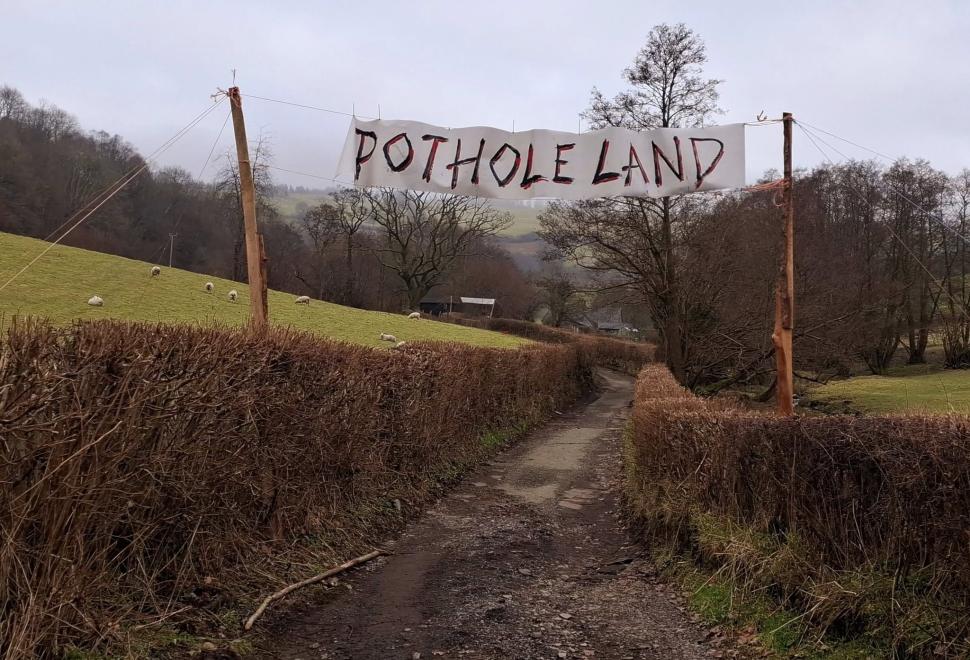 Pothole Land signs, Wrexham (John Williams, Facebook) (credit: road.cc)
Pothole Land signs, Wrexham (John Williams, Facebook) (credit: road.cc)
And while the images were widely shared for their amusing protest, the serious and tragic impact of the UK’s crumbling roads is all too commonly reported on this website and elsewhere.
An inquest into the death of Harry Colledge, in Lancashire in 2023, found that a council worker – who inspected the rural road months before the “much-loved” cyclist’s fatal crash caused by a defect – had missed the six-inch deep crack, described in court as like a “trench”, because the inspection’s “primary focus” was to identify “dangers to cars”, not cyclists.
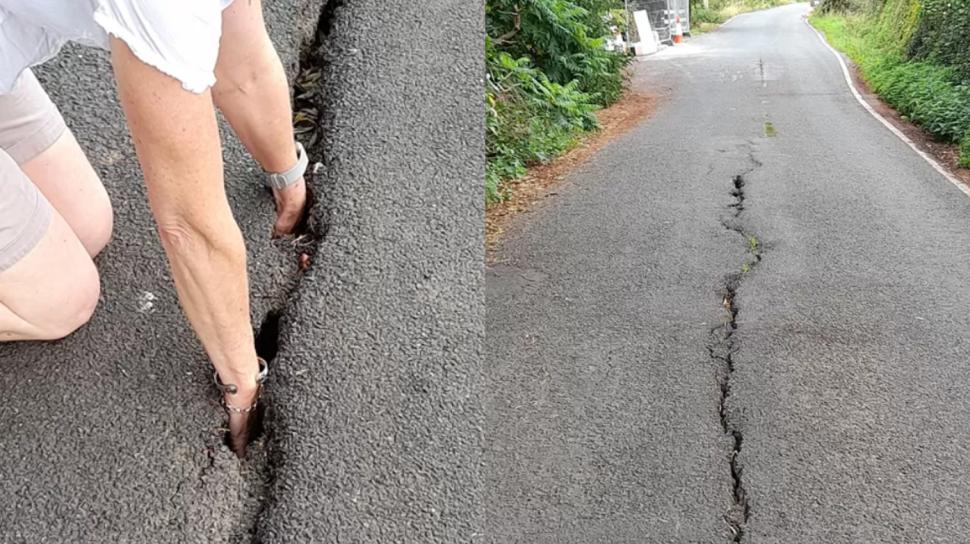 Crack on Island Lane, Winmarleigh (Lancashire Coroner) (credit: road.cc)
Crack on Island Lane, Winmarleigh (Lancashire Coroner) (credit: road.cc)
A year earlier a coroner submitted a report raising concerns about Surrey County Council’s lack of action in repairing dangerous potholes, one of which caused a fatal cycling crash in June 2020.
